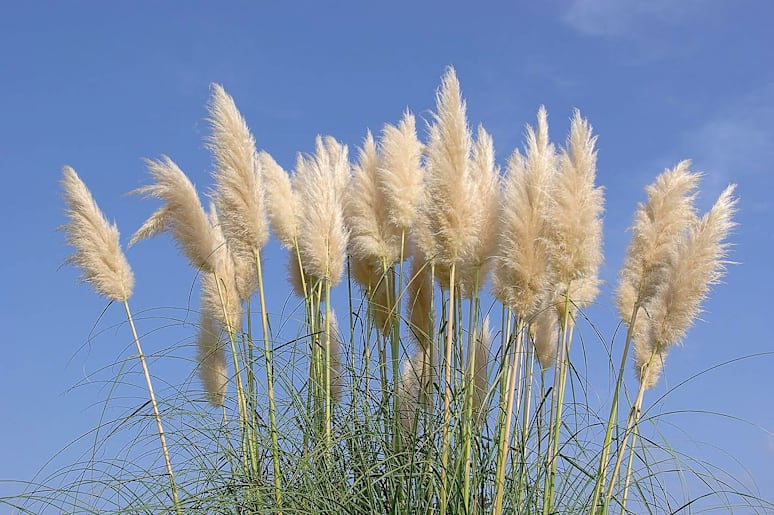This time of the year, a lot of people take great delight in spotting what they think is our giant native toetoe grass flowering along roadsides, beaches and various other parts of the landscape.
Travellers and holidaymakers share photos online of the splaying fountain-like grasses suddenly sprouting mop-like flowerheads — typically silhouetted against some dramatic sunsets.
Except the plant most of those people are celebrating is not one of five unique national taonga toetoe species toetoe, but an invasive South American relative — two species of which were introduced by early settlers and are colloquially known as common pampas and purple pampas.
Toetoe is a symbol of Aotearoa and part of New Zealand’s heritage.
It is our country’s largest native tussock grass and endemic to this country. Toetoe is generally confined to places like sand dunes, cliffs, swamps and wetlands, and of course people’s gardens. Historically, Māori used toetoe for making medicines, for walls and roofs in houses, and mats and kete (baskets).
Pampas on the other hand is an invasive weed and widely listed as a pest plant since 2001.
It spreads and grows very quickly, easily migrating to poor soils and stony terrain like that disturbed for forestry or roading.
One female plant can make millions of seeds. These can spread up to 25km. Pampas takes over areas of land, suffocating other native plants that can’t grow.
So, how do we tell them apart?
Here are three key tips:
■ If it’s flowering during winter, it’s not toetoe. Pampas flowers in the autumn (February to June) while toetoe starts flowering in the Spring (October). However, take care on relying on this tip alone as flowers can remain on the stems for some months.
■ Pampas flowers stand upright and erect. In contrast, the flowers on toetoe tend to droop downwards. However, don’t solely rely on this tip either as older pampas flowers sometimes droop a bit too.
■ The leaves on the two appear similar from afar, but take a closer look and you’ll see that pampas grass has a single tall mid-rib that runs the length of the leaf. In contrast, toetoe has several veins that run the length of the leaf. This difference can be seen by the fact that it is easy to tear the leaf of a pampas, but the toetoe won’t rip — even when you pull on it firmly.
Like most things, it’s best to look at all of those features combined to be certain which plant is which.
But if you’re still unsure, here are some other differences between Pampas and toetoe:
■ Pampas is a large plant that can grow more than five metres tall. Toetoe is a smaller plant, that grows up to about three metres.
■ Toetoe flowers are golden or cream in colour, delicate, pale and curving. Pampas flowers by comparison range in colour from white to cream, pink, or mauve and they tend to look fuller.
■ Toetoe leaves have a white, waxy layer at the base. Pampas leaves turn brown and curl up at the base when they’re dead, making them a fire risk and home for pests
■ If you think you have toetoe in your area, it could actually be pampas. You can research on the internet how to get rid of pesky pampas. Please help to spread this information and not the weed!
The following are some useful websites about pampas and toetoe.
If you find pampas on your own land, please research before removing it so you don’t risk spreading it further.
If you find pampas on public land, please notify your local council or DoC office.
Removal tips can be found on these links:
■https://www.waikatoregion.govt.nz/services/plant-and-animal-pests/pampas/
■https://www.weedbusters.org.nz/what-are-weeds/weed-list/pampas/
■https://www.weedbusters.org.nz/what-are-weeds/weed-list/purple-pampas/
Other useful links:
■https://tawapou.co.nz/search?q=toetoe
■ https://www.nzpcn.org.nz/flora/species/?common_name=toetoe











